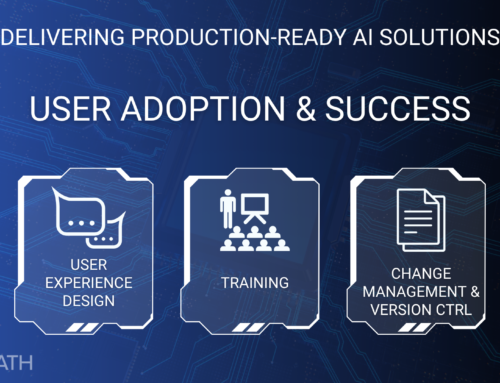Deploying an ML model into production in an enterprise environment where multiple teams or departments are involved adds complexity to the process. Each team may have its own tools, processes, and priorities, which can impact various aspects of the deployment. Here's how this multi-team dynamic can affect productionizing ML models:
1. Collaboration and Communication
- Interdisciplinary Collaboration: Effective deployment often requires close collaboration between data scientists, machine learning engineers, DevOps, IT, security, and business stakeholders. Misalignment or lack of communication between these teams can lead to delays, integration issues, or unmet requirements.
- Clear Communication Channels: Establishing clear communication channels and regular meetings can help ensure that all teams are aligned on goals, timelines, and expectations.
2. Tool Integration
- Tool Diversity: Different teams may use different tools for version control, CI/CD pipelines, data management, monitoring, and infrastructure management. Integrating these tools into a cohesive workflow can be challenging.
- Interoperability: Ensuring that tools used by different teams are interoperable is crucial. This might involve creating custom integrations or adopting a unified platform that supports the needs of all stakeholders.
3. Data Management and Governance
- Data Silos: Different departments may maintain their own data silos, which can complicate access to data for training and inference. Ensuring seamless data sharing and maintaining data quality across these silos is essential.
- Data Governance: Each team may have its own data governance policies, especially concerning data privacy, security, and compliance. Harmonizing these policies is critical to avoid conflicts and ensure legal and regulatory compliance.
4. Security and Compliance
- Differing Security Protocols: Security teams may have protocols that differ from the practices of data science or DevOps teams. Ensuring that security measures are consistently applied across all stages of the ML lifecycle is crucial to prevent vulnerabilities.
- Compliance Alignment: Each department may be subject to different regulatory requirements. Aligning on compliance needs across teams ensures that the ML model adheres to all necessary regulations.
5. Model Deployment and Infrastructure
- Infrastructure Ownership: Different teams may manage different parts of the infrastructure (e.g., IT manages on-premise servers, while DevOps manages cloud resources). Coordinating the deployment across these infrastructures can be complex.
- Resource Allocation: Conflicts can arise over the allocation of computational resources (e.g., GPUs, CPUs, memory), especially if multiple teams need these resources simultaneously. Proper resource management and scheduling are necessary to prevent bottlenecks.
6. Continuous Integration/Continuous Deployment (CI/CD)
- Diverse CI/CD Practices: Teams may have their own CI/CD pipelines with different tools and processes. Standardizing or integrating these pipelines to support the end-to-end ML deployment process can be challenging but necessary for efficient operation.
- Testing and Validation: Ensuring that models are thoroughly tested and validated within the existing CI/CD frameworks requires collaboration between data scientists, software engineers, and quality assurance teams.
7. Monitoring and Maintenance
- Unified Monitoring Systems: Different teams may have their own monitoring tools and practices. Implementing a unified monitoring system that can track the health, performance, and security of the ML model across all environments is critical.
- Incident Response: Different teams may have their own incident response protocols. Aligning these protocols ensures that issues can be quickly identified, escalated, and resolved.
8. Change Management and Governance
- Change Control Processes: Enterprise environments often have strict change control processes, which can vary between departments. Ensuring that ML model updates or rollbacks align with these processes across all teams is crucial to avoid disruptions.
- Model Governance: Different teams might have different approaches to model governance, including versioning, approval processes, and audit requirements. Harmonizing these approaches helps ensure consistency and accountability.
9. User Training and Support
- Training Across Teams: Each team involved in the deployment process needs adequate training on the model, its functionality, and how it integrates with their specific tools and processes. Coordinating this training across multiple teams can be complex but is essential for smooth operation.
- Support and Troubleshooting: Support for the ML model might require input from multiple teams, each with its own expertise. Establishing a clear support structure and escalation paths helps ensure that issues are resolved efficiently.
10. Cultural and Organizational Challenges
- Differing Priorities: Teams may have different priorities, with some focused on innovation (e.g., data science), while others prioritize stability and reliability (e.g., IT, security). Balancing these priorities is essential for a successful deployment.
- Resistance to Change: Some teams may resist adopting new tools or processes, especially if they disrupt established workflows. Addressing this resistance through change management strategies is crucial for successful adoption.
11. Budgeting and Cost Management
- Cost Allocation: Different departments may have separate budgets, leading to challenges in allocating costs associated with model development, deployment, and maintenance. Ensuring transparent and fair cost allocation is important for financial sustainability.
- Cross-Team Budget Coordination: Coordinating budgets across teams can help avoid overspending or resource shortages, especially when scaling the model to meet enterprise needs.
12. Legal and Contractual Considerations
- Contractual Obligations: If different teams have contracts with different vendors or service providers (e.g., cloud services, data providers), ensuring that the ML deployment adheres to all contractual obligations is critical to avoid legal issues.
- IP and Licensing Issues: Different teams may use different open-source libraries, pre-trained models, or proprietary tools. Ensuring that the deployment complies with licensing agreements and intellectual property laws is essential.
By understanding and addressing these interdepartmental dynamics, enterprises can streamline the productionization of ML models, ensuring that the deployment is not only technically sound but also aligned with organizational goals and constraints.





